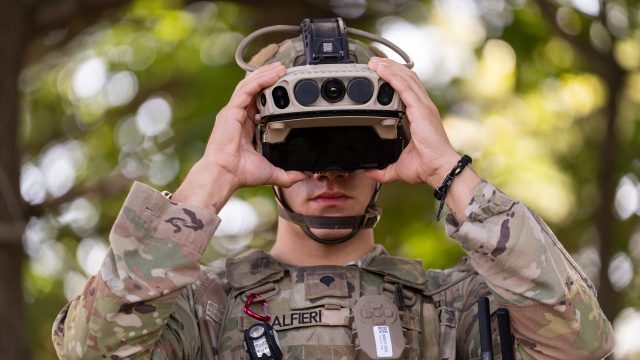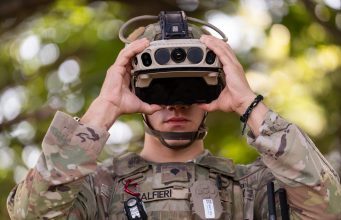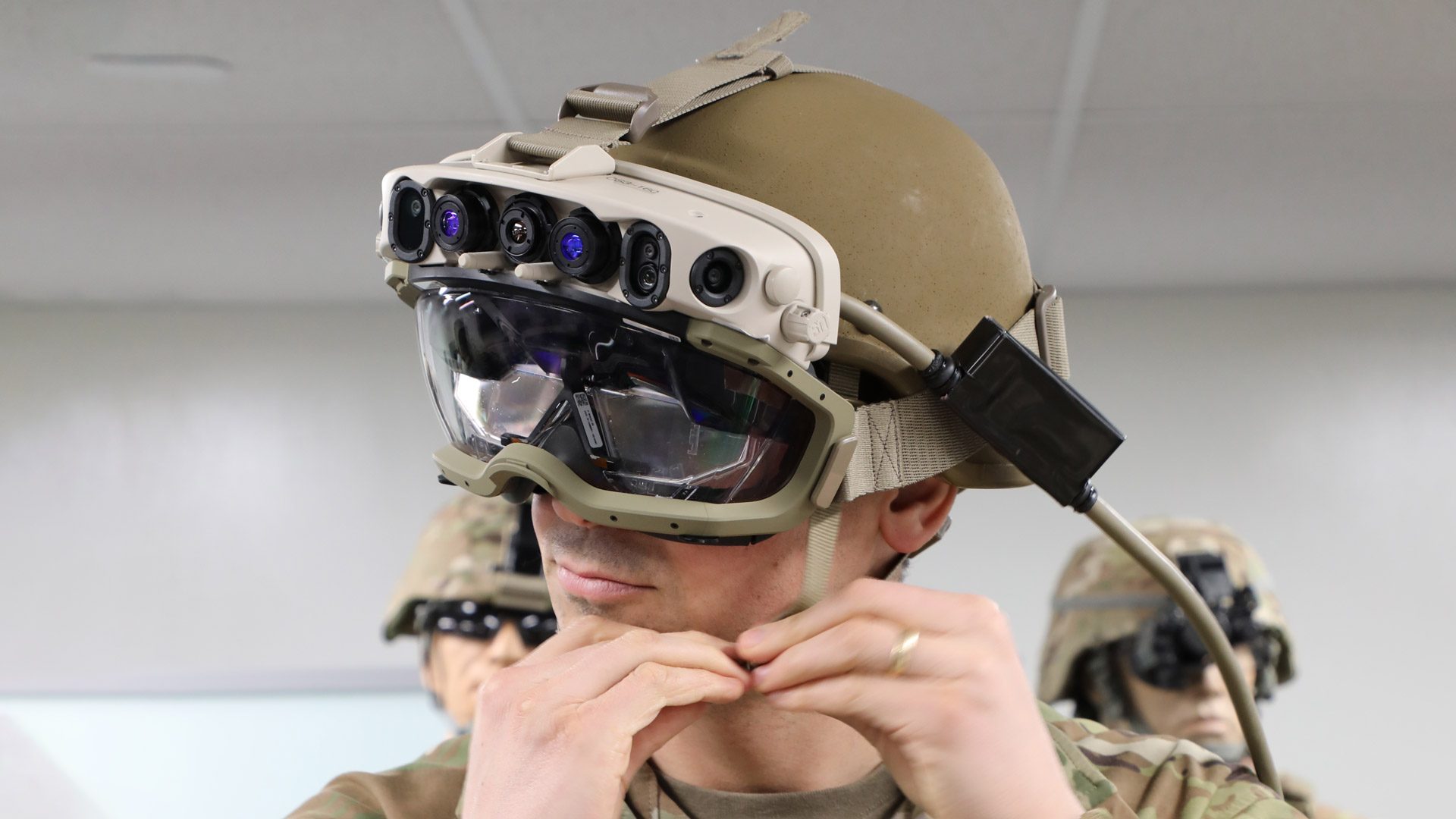

Microsoft’s contract with the U.S. Army to build a combat-ready AR headset is worth up to $22 billion, but only if the company can deliver the goods at “substantially less than” the projected $80,000 per unit, the Army tells Bloomberg. Requirements also include definitively positive field testing, set to take place early next year.
Based on HoloLens 2, Microsoft’s specially-built Integrated Visual Augmentation System (IVAS) has faced multiple challenges since being awarded the Army contract in 2019, including poor field testing results due to reliability and ruggedness issues. Despite recent improvements in the 1.2 version, such as better reliability and display clarity, and a flip-up design, the Army hasn’t scaled up orders yet.
While the contract stipulates the Army could order up to 121,000 of Microsoft’s IVAS, that’s pending further field testing—set to take place from April to June 2025. Price is also a “key factor,” Army acquisition chief Doug Bush says.
At the annual Association of the United States Army (AUSA) conference last week in Washington D.C., Bush said testing is “going much better than the first time around,” adding that “a lot of the problems have been fixed.” The Army still needs to “something that’s affordable” in order to cue up full production, however.

Unit cost is “a key factor next year when senior leaders make decisions about going into production,” Bush said. And the pricing goal should be “substantially less than $80,000,” an Army statement obtained by Bloomberg maintains.
Around half of the bill of costs can be chalked up to the system itself, which includes the AR headset—modified with sensors and thermal imaging—a battery, and chest unit for displaying information, such as the location of overhead drones. The remainder includes increased expenditures, such as Army program management to Microsoft engineering and software support, as per the Bloomberg report.
“We are going through the program to identify where we can reduce costs,” Microsoft’s Mixed Reality and HoloLens chief Robin Seiler told reporters last week. “It’s a fairly complex system, so when you look at cost reduction you have to look at it from a component level, from a labor level and from your supply chain.”
Despite best efforts, Microsoft’s contract may actually be at risk. The Army is reportedly preparing to hold ‘IVAS Next’ later this year, a new open competition that could see Microsoft replaced entirely as the prime contractor of IVAS.
Meanwhile, in an apparent bid to boost Microsoft’s chances at keeping the contract, Oculus founder Palmer Luckey’s defense startup Anduril has partnered with Microsoft to provide the combat-ready headset with its Lattice platform, which integrates real-time threat detection to improve battlefield awareness and survivability by sourcing data from drones, ground vehicles, and aerial defense systems.
The post U.S. Army Needs Microsoft AR Headset to Be “substantially less” Than Projected $80K Price Tag appeared first on Road to VR.
from Road to VR https://ift.tt/ywzH8EB
via IFTTT
No comments:
Post a Comment